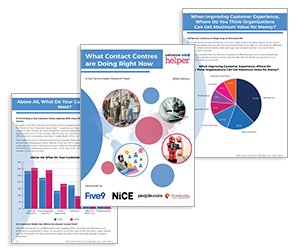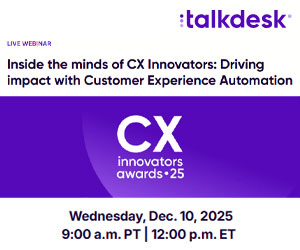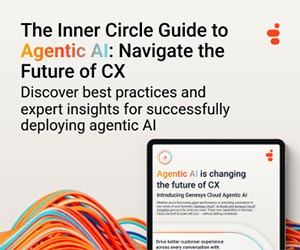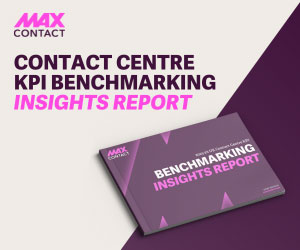Zainab Ahmed at Peopleware explores how strategic, outcome-driven WFM data integration can break down operational silos, improve forecasting, and empower contact centres to make smarter, faster decisions.
For contact centres to deliver a consistent customer experience and maintain a competitive advantage, it’s critical to integrate WFM data.
Not integrating with a centralized WFM software means that information is trapped across disconnected legacy systems, creating data silos.
These data silos are easy to miss, and that’s precisely what makes them dangerous. For example, systems like ACD, IVR, and CRM all operate independently and generate different types of data (audio files, text, time-stamped events, metrics, etc.).
When this information exists in isolation, it’s hard to gain a holistic view of operations. As a result, extracting meaningful, actionable insights becomes a major challenge.
Consider a scenario where your AHT (Average Handle Time) spiked following a new product rollout. To understand why this happened, you need historical and real-time data from different systems.
AHT data might sit in your ACD, schedule adherence in your WFM system, and customer satisfaction scores in your CRM.
Without connecting and visualizing all this data in one place, how can you accurately determine whether the longer AHT is caused by agent inefficiency, a broken process, or a more complex customer segment?
Basing decisions on incomplete, siloed data makes you vulnerable to:
- inaccurate forecasting
- inefficient resource allocation
- damaged customer experience
- increased operational costs.
Data Integration Is Not Just an IT Project, It’s a Business Strategy
Often, contact centres integrate data without cleaning it up and expect the WFM software to do the heavy lifting.
But if your data isn’t structured to support your desired outcome, the data integration will be ineffective and lead to inaccurate decisions. Focusing solely on technology without clear business goals leads you to miss critical questions like:
- Is the aim of the integration to improve agent management or real-time adherence?
- Are you trying to optimize schedules or move away from Excel?
- Are you trying to enhance the customer experience through IVR and other systems?
- Can the legacy systems support these objectives and integrate with newer WFM software?
This lack of clarity on what success looks like is why many WFM data integration projects fail. Successful data integrations require perspectives from multiple stakeholders across operations, planning, and workforce strategy, which IT alone cannot offer.
If you don’t take a step back and consider the overall aim of the integration, you risk investing in technology that doesn’t address your operational pain points or future scalability needs.
The success of data integration for contact centres is not determined by the technology but is rooted in the process behind it.
If the process is misaligned, or worse, undefined, technology decisions become reactive. You might end up with integrations that solve the wrong problems or even create new ones.
The good news is, you can easily reframe your approach to ensure your WFM data integration drives the right business outcomes and puts you ahead of the competition. Before starting an integration project, take some time to first:
Identify and Align With Stakeholders Before Defining Outcomes
Start by identifying which areas of the business the integration will impact. Involve multiple views from the beginning by bringing together operations, workforce planning, customer service, IT, and other related stakeholders to ensure your integration is not trying only to solve isolated issues.
Define Clear Outcomes Before Jumping Into Tech
The second thing to keep in mind is: be clear about your outcomes. Whether it’s improving forecasting accuracy, shift optimization, enhancing agent performance, streamlining customer service, or moving away from Excel.
Before deciding on the technology (how to do it), talk to your stakeholders and define your objectives (what to do). Having this clarity early on sets your data integration up for success and ensures it aligns with the broader business strategy
Clean Your Data Before Integrating It
Carefully analyse your existing data to ensure it is consistent, complete, and high-quality. This can be the difference between an integration that only gives you short-term results vs. an integration that sets your company up for long-term success.
The Value of Doing Data Integration Right
Strategic WFM data integration can give you a competitive edge by enabling accurate forecasting, optimized scheduling, improved adherence, and an enhanced customer journey. However, making smart data-driven decisions is only possible when working with the right data.
Thinking that integration alone, without strategic alignment and a solid process to back it up, will solve your problems is a flawed and risky assumption. It sets you up for failure before you even start.
Driving data integration from a strategic point of view may seem like an overhead, but it pays off in the long run. Adding a layer of thinking to align your efforts with your goals increases your chances of getting a successful integration that improves accuracy, agility, planning, and gives fewer surprises.
This blog post has been re-published by kind permission of Peopleware – View the Original Article
For more information about Peopleware - visit the Peopleware Website
Call Centre Helper is not responsible for the content of these guest blog posts. The opinions expressed in this article are those of the author, and do not necessarily reflect those of Call Centre Helper.
Author: Peopleware
Reviewed by: Jo Robinson
Published On: 6th Jun 2025 - Last modified: 10th Jun 2025
Read more about - Guest Blogs, Peopleware




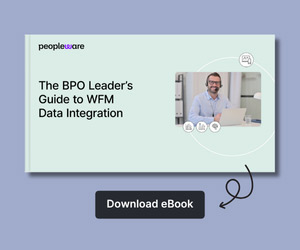

 Peopleware is a leading workforce management (WFM) solution, trusted by over 500,000 users in 30+ countries. With smart forecasting, automated scheduling and real-time management, organizations can optimize workforce efficiency and keep work aligned with demand. From precise time tracking to flexible planning, Peopleware helps organizations boost operational efficiency and foster a more engaged, productive workforce.
Peopleware is a leading workforce management (WFM) solution, trusted by over 500,000 users in 30+ countries. With smart forecasting, automated scheduling and real-time management, organizations can optimize workforce efficiency and keep work aligned with demand. From precise time tracking to flexible planning, Peopleware helps organizations boost operational efficiency and foster a more engaged, productive workforce. 




